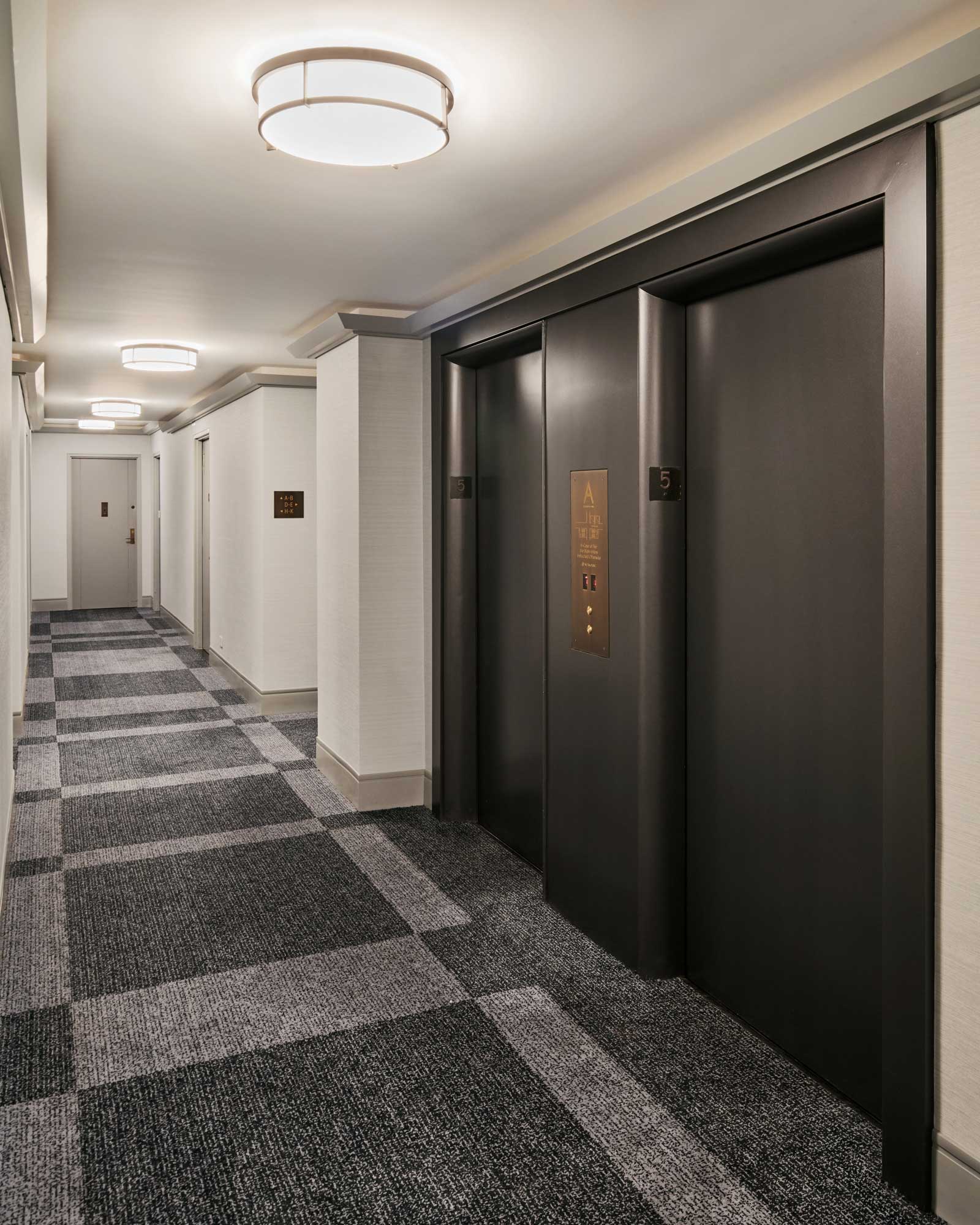2 Fifth Avenue
Hallway Renovation
Project Details
-
Project Address: 2 Fifth Avenue
- Number of Units: 343 Units
-
Management Company: Douglas Elliman Property Management
-
Project Type: Hallways
- Project Duration: 20 Weeks
- Project Scope: Granite door saddles, custom door hardware package, crown molding, custom steel elevator surrounds, paint, wall covering, and carpet
- Vendor(s):
-
Carpet: Aronson Axminster
-
Wall Covering: Carnegie
-
Light Fixtures: Custom
-
Moldings: Orac
-
Hardware: Omnia
-
Paint: Scuffmaster
-
- Building Description:
- 2 Fifth Avenue is a block long residential cooperative located in New York’s Greenwich Village across the street from the Washington Arch. The colossal co-op was built by Samuel Rudin along with Emery Roth and Sons in 1951. Due to major controversy from the local community, the complex was uniquely designed as two components: a white brick high-rise facing Fifth Avenue and a five-story red brick wing which sits on Washington Avenue. This separation between the structures was an attempt to blend the low-rise wing in with the neighboring Greek-revival style homes.
- 2 Fifth Avenue was one of the first white brick apartment towers built in New York City. Soon after, white brick was the standard in high-rise architecture for the middle and upper class. Moreover, these buildings became the answer to NYC’s housing shortage as WWII vets began returning home. At the time, these glazed towers represented “clean, shiny modernism” and were considered a beacon in an otherwise dreary city.
- Named after the Dutch word, “Groenwijck”, Greenwich Village is known as one of the most significant neighborhoods in New York City and was designated as a historic district in 1969. The Village’s earliest known inhabitants were Native Americans whom camped and fished on stream later known as Minetta Brook. During the Twentieth century, Greenwich Village became a haven for artists, musicians, and activists. In fact, several political and social movements were formed in the Village which helped to define American culture. Today the neighborhood is one of the most exclusive in the nation and is home to NYC’s largest cluster of Federal style row houses.




